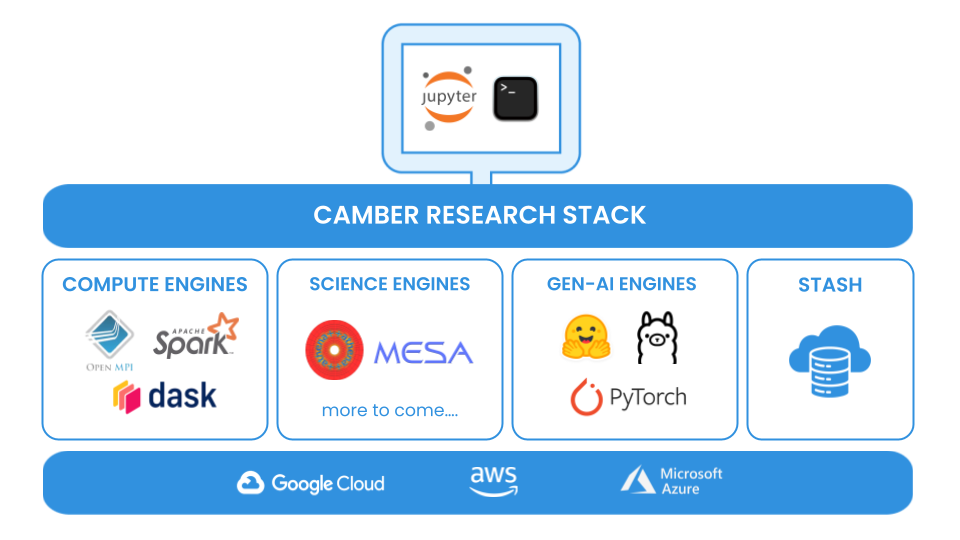What is Camber?
Camber is a cloud-native platform designed to make scientific computing faster, more accessible, and easier to manage. Whether you’re running complex genomic pipelines, modeling physical systems, or teaching scientific computing, Camber helps you focus on your work—not on managing infrastructure.

Why Camber?
Modern scientific computing often requires navigating cloud services, setting up compute environments, managing data movement, and tracking complex workflows. Camber abstracts these challenges so researchers, students, and developers can:
- Run compute-intensive jobs without configuring cloud environments
- Share workflows and data across teams or institutions
- Automate tasks and manage experiments reproducibly
- Scale quickly with cloud-based compute and storage
Core Features
- Cloud-Native Execution: Run jobs using scalable CPU or GPU resources on demand.
- Integrated Data Management: Organize and access datasets easily with Camber Stash.
- Workflow Support: Native support for Nextflow enables reproducible pipelines for life science and HPC workflows.
- Command-Line Interface (CLI): Camber’s CLI offers a simple and scriptable interface for power users and automation.
How It Works
Camber provides a set of tools and services that connect storage, compute, and workflows into a seamless environment:
- Upload or reference your data
- Choose a scientific application or pipeline
- Run jobs using pre-configured compute environments
- Monitor progress and download results
Who Is It For?
Camber is used by:
- Researchers running large-scale scientific analysis
- Educators teaching HPC, genomics, or computational science
- Developers building workflows or scientific tools
- Collaborators who need to share workflows and results across organizations
Learn More
Explore the Examples Notebooks section to see how Camber supports real-world scientific work, or dive into the CLI documentation to get started programmatically.